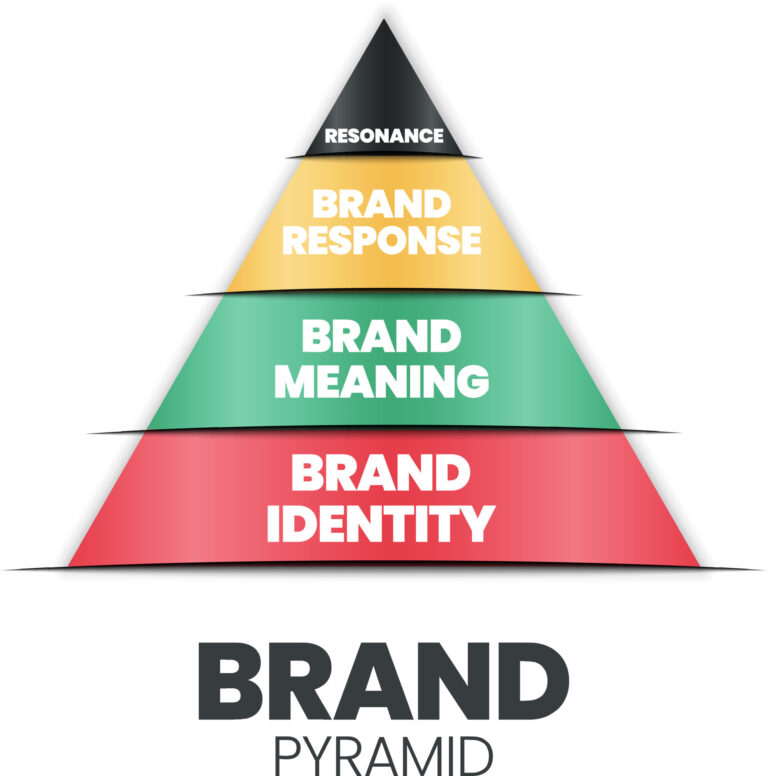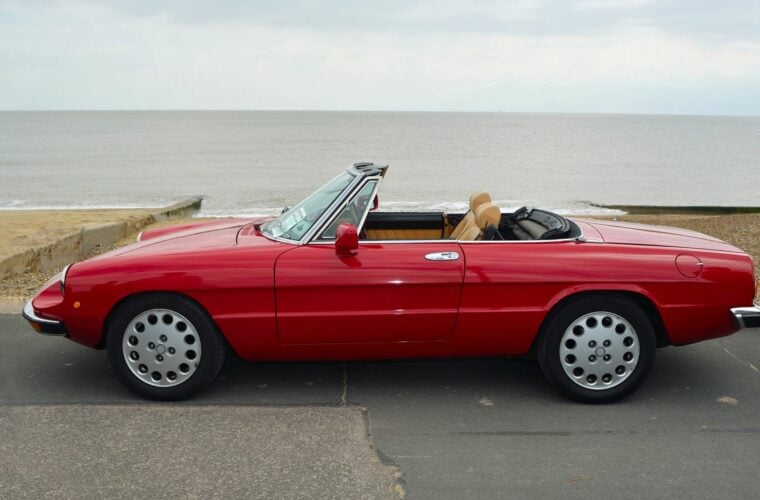Eagle Car Brand: A Deep Dive into Chrysler’s Short-Lived Experiment
Eagle Car Brand: A Deep Dive into Chrysler’s Short-Lived Experiment cars.truckstrend.com
In the vast and ever-evolving landscape of the automotive industry, brands emerge and fade, leaving behind legacies of innovation, design, and sometimes, a quiet historical footprint. Among these, the Eagle car brand stands out as a unique, albeit brief, chapter in American automotive history. Born from the complex corporate maneuvers of the late 1980s, Eagle was Chrysler Corporation’s ambitious attempt to carve out a new niche, distinguish certain products, and leverage recent acquisitions. While its presence on the market was fleeting, spanning just a decade from 1988 to 1998, the Eagle brand represents a fascinating case study in branding strategy, market dynamics, and the challenges of establishing a new identity within a crowded field.
This comprehensive article will explore the Eagle car brand from its inception to its eventual dissolution. We will delve into the motivations behind its creation, examine its key models, discuss the practicalities of owning an Eagle vehicle today, analyze the reasons for its demise, and reflect on its enduring legacy. Whether you’re a classic car enthusiast, a student of automotive history, or simply curious about this intriguing marque, join us as we unfold the story of the Eagle.
Eagle Car Brand: A Deep Dive into Chrysler’s Short-Lived Experiment
The Genesis of Eagle: Chrysler’s Bold Experiment
The story of the Eagle brand is inextricably linked to Chrysler’s acquisition of American Motors Corporation (AMC) in 1987. AMC, though struggling financially, brought with it two valuable assets: the highly successful Jeep brand and a partnership with Renault that had yielded the advanced, European-designed Renault Premier sedan. Chrysler’s then-chairman, Lee Iacocca, saw an opportunity. Jeep was clearly a gem, but what to do with the remaining AMC passenger car lineup and the sophisticated Premier?
Rather than simply absorbing these vehicles into existing Chrysler, Dodge, or Plymouth showrooms, a new strategy was devised. The Eagle brand was officially launched in 1988, intended to serve several purposes:
- Differentiate Acquired Products: Provide a distinct identity for vehicles inherited from AMC, particularly the Premier, which was too upscale and technologically advanced to fit neatly into Chrysler’s existing economy-focused lineup.
- Appeal to a Younger, Sportier Demographic: Position Eagle as a brand for enthusiasts seeking performance, European styling, and unique features, particularly with models like the Eagle Talon.
- Utilize Existing Dealership Networks: Convert former AMC-Jeep dealerships into Jeep-Eagle franchises, ensuring a ready-made distribution channel.
- Leverage Mitsubishi Partnerships: Rebadge certain Mitsubishi models, providing Eagle with competitive compact and subcompact offerings without significant development costs.
:max_bytes(150000):strip_icc()/bald-eagle-flying-117146366-f0a7d09f96ac460eb86e241c40b8c54c.jpg)
In essence, Eagle was an attempt to create a "boutique" brand within the Chrysler family, aiming for a more refined, performance-oriented image than its siblings. It was a bold experiment, but one that would ultimately face significant headwinds.
A Fleet of Feathers: Exploring Eagle’s Key Models
The Eagle brand’s lineup, though relatively small, featured a diverse range of vehicles, each with its own origin story and target market. Understanding these models is key to appreciating the brand’s intended scope.
-
Eagle Premier (1988-1992): The flagship of the brand, the Premier was arguably the most significant vehicle under the Eagle banner. It was a full-size sedan, originally designed by AMC in collaboration with Renault, utilizing a highly advanced (for its time) longitudinal engine layout and an independent rear suspension. Its elegant Giugiaro-designed exterior and spacious, ergonomic interior earned it critical acclaim. The Premier was intended to compete with European and Japanese luxury sedans, offering sophistication and a smooth ride. It later formed the basis for Chrysler’s successful LH platform cars (Concorde, Intrepid, Vision).
-
Eagle Medallion (1988-1989): Another direct import from the AMC-Renault partnership, the Medallion was a rebadged Renault 21. Available as a sedan and a rare wagon, it was a compact family car designed to compete with the likes of Honda Accord and Toyota Camry. Its European styling and practical nature were its main selling points, though it had a very short run under the Eagle nameplate.

-
Eagle Summit (1989-1996): This was where the Mitsubishi partnership came into play. The Summit was a rebadged version of the Mitsubishi Mirage/Colt, offered as a compact sedan, hatchback, and even a wagon (the Summit Wagon, a rebadged Mitsubishi Expo/Space Wagon). It provided Eagle with an economical, reliable entry-level offering, appealing to budget-conscious buyers seeking fuel efficiency and practicality.
-
Eagle Talon (1990-1998): Perhaps the most iconic and successful Eagle model, the Talon was part of the Diamond-Star Motors (DSM) joint venture between Chrysler and Mitsubishi. Alongside its siblings, the Mitsubishi Eclipse and Plymouth Laser, the Talon was a sporty 2+2 coupe available with various powertrains, including a potent turbocharged all-wheel-drive (AWD) option. It quickly gained a cult following among performance enthusiasts due to its excellent handling, tunable engine, and distinctive styling. The Talon embodied the "sporty" image Eagle was trying to cultivate.
-
Eagle Vision (1993-1997): When the Premier was discontinued, its legacy lived on through the Vision. This was one of Chrysler’s groundbreaking "cab-forward" LH platform cars, sharing its architecture with the Dodge Intrepid and Chrysler Concorde. The Vision was positioned as the sportier, more aggressive-looking sibling among the LH cars, featuring unique styling cues and a more performance-oriented trim. It was a modern, spacious, and powerful sedan that briefly gave the Eagle brand a contemporary flagship.
-
Eagle 2000GTX (Canada only, 1991-1992): A rare model, this was a rebadged Mitsubishi Galant. It showcased the flexibility of the Mitsubishi partnership, though it never reached the US market under the Eagle name.

This diverse lineup demonstrated Eagle’s ambition to cover various market segments, from entry-level compacts to sporty coupes and full-size sedans, all while trying to maintain a distinct identity.
The Eagle Owner’s Manual: Practicalities of Driving a Defunct Brand
For those considering owning an Eagle vehicle today, or for current owners, understanding the practical aspects is crucial. While these cars are no longer in production, many remain on the road, offering a unique piece of automotive history.
Important Considerations:
- Parts Availability: This is often the biggest challenge. While common wear-and-tear items (brakes, filters, spark plugs) are generally still available, specific body panels, interior trim pieces, or unique mechanical components for less common models (like the Premier) can be very difficult to find. Shared components with Chrysler, Dodge, Plymouth, or Mitsubishi models are a significant advantage. For instance, Talon parts often cross-reference with the Eclipse.
- Specialized Mechanics: Finding mechanics familiar with older, less common vehicles can be tricky. While many components are standard, specific diagnostic tools or knowledge of unique systems (like the Premier’s Renault-derived electronics) might require a specialist.
- Resale Value: Generally, Eagle vehicles do not hold high resale values, except for well-preserved, desirable models like the Eagle Talon TSi AWD, which can command a premium among enthusiasts. For most other models, they are affordable entry points into classic car ownership.
- Insurance: Insuring an older vehicle is typically straightforward, though classic car insurance might be an option for very well-maintained or low-mileage examples.
- Community Support: For popular models like the Talon, vibrant online communities, forums, and owner clubs exist. These resources are invaluable for troubleshooting, finding parts, and sharing knowledge. Less common models might have smaller, but equally dedicated, groups.
Tips for Owners and Prospective Buyers:
- Research Thoroughly: Before buying, research the specific model’s common issues, parts availability, and known quirks. Online forums are your best friend.
- Pre-Purchase Inspection (PPI): Always get a PPI from a trusted mechanic, especially one experienced with older or performance vehicles.
- Prioritize Maintenance Records: A car with a comprehensive maintenance history is always a better bet, regardless of age.
- Embrace DIY: For many common issues, learning to do basic maintenance yourself can save money and give you a deeper understanding of your vehicle.
- Network with Enthusiasts: Join online forums and local car clubs. The collective knowledge of the community is an unparalleled resource.
- Consider a Parts Car: For rarer models, buying a second, non-running vehicle for parts can be a cost-effective long-term strategy.
Challenges and Solutions:
- Challenge: Obsolete Technology: Older infotainment systems, basic safety features, and less refined driving dynamics compared to modern cars.
- Solution: Embrace the retro feel. For audio, aftermarket head units are readily available. Focus on the driving experience rather than cutting-edge tech.
- Challenge: Rust and Deterioration: Like any older car, Eagles are susceptible to rust, especially in regions with harsh winters. Rubber and plastic components also degrade over time.
- Solution: Thorough inspection before purchase. Regular cleaning and rust prevention treatments. Prompt replacement of deteriorating components.
- Challenge: Fuel Economy: Older engines, especially performance-oriented ones, may not offer the best fuel efficiency by modern standards.
- Solution: Factor this into your budget. For daily drivers, consider more economical Eagle models (e.g., Summit).
Owning an Eagle today is less about convenience and more about appreciation for automotive history and the unique driving experience these cars offer. It’s a journey for the dedicated enthusiast.
Why the Eagle’s Wings Were Clipped: The Brand’s Demise
Despite its initial promise and some critically acclaimed models, the Eagle brand’s flight was ultimately cut short. By 1998, Chrysler made the decision to discontinue the brand, consolidating its efforts around its core Dodge, Chrysler, and Jeep marques. Several factors contributed to Eagle’s demise:
- Lack of Clear Identity: This was arguably the biggest issue. While intended to be sporty and sophisticated, Eagle’s lineup was a mix of rebadged Mitsubishis, Renault-derived sedans, and later, Chrysler-platform cars. It lacked a cohesive design language or a distinct brand image that resonated with consumers. Dodge and Plymouth often offered very similar vehicles, creating internal competition.
- Internal Competition: The introduction of Chrysler’s LH platform cars (Concorde, Intrepid, LHS, New Yorker) directly competed with the Eagle Vision, and in some cases, overshadowed it. The Dodge Intrepid, for example, offered a sportier image within a more established brand.
- Limited Marketing Budget: As a smaller brand within a larger corporation, Eagle likely received less marketing investment compared to the flagship Chrysler or high-volume Dodge brands. This made it difficult to build strong brand awareness.
- Dealer Confusion: While Jeep-Eagle dealerships existed, the brand sometimes felt like an afterthought to the highly profitable Jeep sales.
- Shifting Market Trends: The late 1990s saw a surge in SUV and truck popularity, a segment where Jeep already dominated. Passenger car sales were facing new pressures.
- Corporate Streamlining: After its merger with Daimler-Benz to form DaimlerChrysler in 1998, a major corporate initiative was to streamline operations and focus on core, profitable brands. Eagle, with its modest sales and unclear identity, was an obvious candidate for elimination.
The final Eagle model, the Talon, ceased production in 1998, marking the end of the brand’s brief but memorable run.
The Eagle’s Legacy: A Footnote in Automotive History
While the Eagle brand didn’t achieve the long-term success of its corporate siblings, it left behind an interesting, if minor, legacy.
- Technological Contributions: The Eagle Premier’s sophisticated design and engineering directly influenced the highly successful Chrysler LH platform, which brought modern, cab-forward sedans to the masses in the 1990s.
- Cult Classic Status: The Eagle Talon, particularly its turbocharged AWD variants, remains a sought-after car among tuners and enthusiasts. Its performance potential and affordability have ensured its place in the modified car scene.
- A Lesson in Branding: Eagle serves as a case study for business students and marketers on the challenges of creating a new brand identity, managing internal competition, and the importance of a clear value proposition.
- Collector’s Items (for some): While most Eagle models aren’t highly collectible, clean examples of the Premier offer a unique glimpse into 1980s European-influenced American design, and the Talon continues to be a desirable performance car.
The Eagle car brand’s story is a reminder that even short-lived ventures can contribute to automotive history, demonstrating innovation, ambition, and the ever-present forces of market dynamics that shape the industry.
Eagle Car Brand: Estimated Resale Values (Used Market)
It’s important to note that the Eagle brand is defunct, and new vehicles are no longer available. The prices below represent estimated average resale values for used vehicles in good, running condition, as of late 2023/early 2024. Actual values can vary significantly based on mileage, condition, trim level, optional features, regional demand, and overall market fluctuations. Performance models in excellent condition with low mileage can fetch higher prices.
| Model | Production Years | Typical Price Range (USD) | Notes |
|---|---|---|---|
| Eagle Talon | 1990-1998 | $3,000 – $15,000+ | TSi AWD models (especially 2G) are most sought after, commanding higher prices for well-preserved or modified examples. |
| Eagle Vision | 1993-1997 | $1,500 – $4,000 | Affordable, spacious sedan. ES trim usually fetches more. |
| Eagle Premier | 1988-1992 | $1,000 – $3,500 | Less common, often found at lower prices due to age/parts concerns. |
| Eagle Summit | 1989-1996 | $1,000 – $2,500 | Economical compact, values depend heavily on condition. |
| Eagle Medallion | 1988-1989 | $800 – $2,000 | Very rare; values are speculative, often project cars. |
Disclaimer: These are rough estimates for functional vehicles. Non-running or heavily damaged vehicles would be significantly less. Collector-grade examples of rare or high-performance models could exceed these ranges.
Frequently Asked Questions (FAQ) about the Eagle Car Brand
Q1: What was the Eagle car brand?
A1: Eagle was an automobile brand created by Chrysler Corporation in 1988 after its acquisition of American Motors Corporation (AMC). It was intended to be a sportier, more sophisticated brand that offered vehicles from AMC’s lineup (like the Premier) and rebadged Mitsubishi models (like the Talon and Summit).
Q2: When was the Eagle brand active?
A2: The Eagle brand was active from 1988 until it was discontinued in 1998.
Q3: Why did Chrysler create the Eagle brand?
A3: Chrysler created Eagle to differentiate certain vehicles acquired from AMC (especially the Premier sedan), to target a younger, sportier demographic, to utilize existing AMC-Jeep dealerships, and to leverage its partnership with Mitsubishi for smaller car offerings.
Q4: What were the most popular Eagle models?
A4: The Eagle Talon, particularly the turbocharged all-wheel-drive (AWD) versions, was the most iconic and popular model due to its performance capabilities. The Eagle Vision, part of Chrysler’s successful LH platform, also had a significant presence.
Q5: Why was the Eagle brand discontinued?
A5: Several factors led to its discontinuation, including a lack of a clear brand identity, internal competition from other Chrysler brands (Dodge, Plymouth, Chrysler), limited marketing budget, and corporate streamlining efforts after the DaimlerChrysler merger.
Q6: Are Eagle cars still reliable today?
A6: Like any older vehicle, reliability depends heavily on how well the car has been maintained throughout its life. Models like the Talon (which shares many components with the Mitsubishi Eclipse) can be quite reliable if properly cared for. Parts availability can be a challenge for some unique components.
Q7: Is it hard to find parts for Eagle cars?
A7: For common wear-and-tear items and parts shared with other Chrysler or Mitsubishi models (especially for the Talon), parts are generally available. However, unique body panels, interior pieces, or specific mechanical components for less common models (like the Premier or Medallion) can be difficult to source and may require searching salvage yards or specialized online communities.
Q8: Are Eagle cars considered collector’s items?
A8: Most Eagle models are not highly collectible. However, the Eagle Talon TSi AWD (especially the second-generation models) has a strong enthusiast following and is considered a desirable collector’s car within the performance tuner community, often commanding higher prices for well-preserved examples. The Eagle Premier is also gaining some niche interest for its unique design and engineering.
Q9: Can I still buy a new Eagle car?
A9: No, the Eagle brand was discontinued in 1998, and new vehicles are no longer produced or sold. Any Eagle car you find today would be a used vehicle.
Q10: What happened to the Eagle Premier’s design?
A10: The fundamental design and platform of the Eagle Premier were used as the basis for Chrysler’s highly successful "cab-forward" LH platform cars, including the Chrysler Concorde, Dodge Intrepid, and the Eagle Vision. This lineage highlights the Premier’s significant, though often uncredited, contribution to Chrysler’s 1990s lineup.
Conclusion
The Eagle car brand, though a short-lived endeavor, holds a distinctive place in automotive history. It represents Chrysler’s attempt to diversify its portfolio, leverage new acquisitions, and tap into emerging market segments. While it ultimately succumbed to challenges in brand identity and internal competition, Eagle left behind a legacy of interesting models, from the technologically advanced Premier to the performance-oriented Talon. For enthusiasts and historians alike, the Eagle brand serves as a compelling case study of ambition, adaptation, and the relentless forces that shape the automotive world. Owning an Eagle today is a testament to an appreciation for its unique story, a commitment to classic car stewardship, and a connection to a fascinating, albeit brief, chapter in American automotive design and engineering. The Eagle may have flown away, but its imprint remains.



